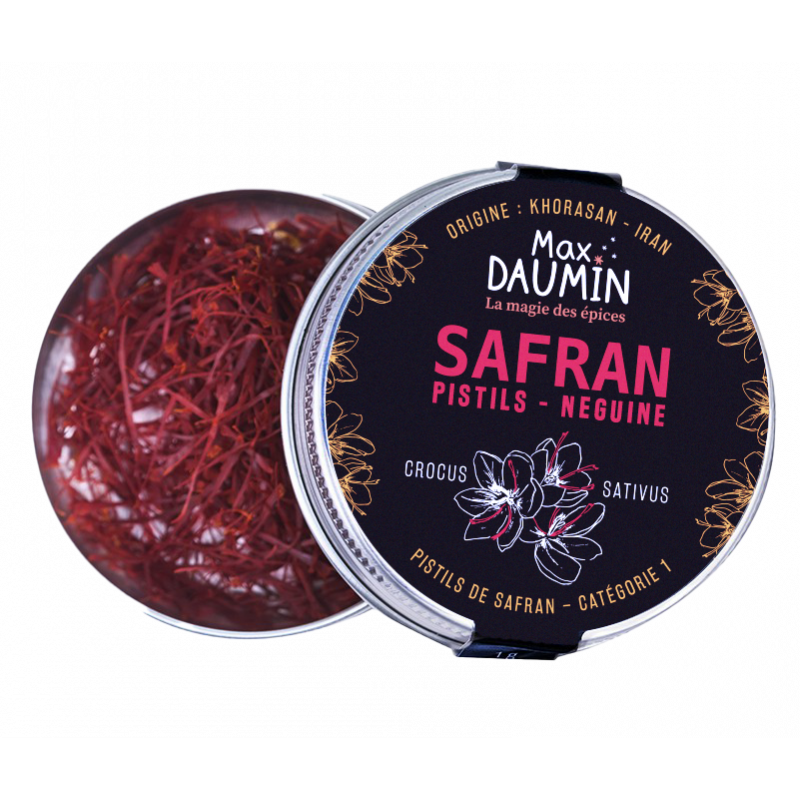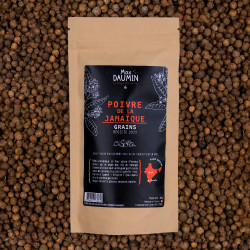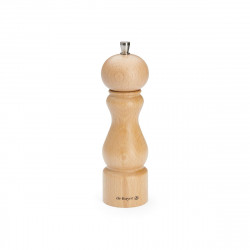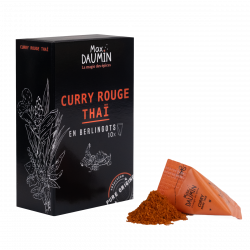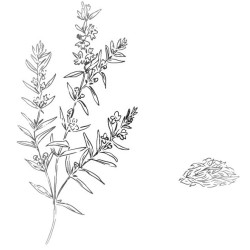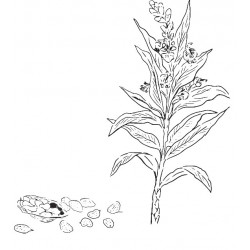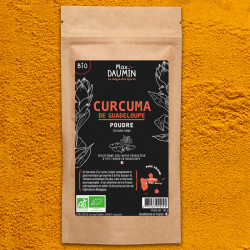Saffron pistils from Afghanistan - Neguine
Saffron from Afghanistan is considered one of the best in the world. Our Afghan saffron from the Herat region is first and foremost the story of a woman, Karima. She set up her small saffron business in the province of Herat, in the northwest of Afghanistan. With a few kilos of saffron produced each year, she is proud "to present a positive image of Afghanistan to the world".
Its saffron is a rare and exceptional product due to its aromatic qualities. A saffron with sweet notes of raisins, prunes, dried straw. It is the best part of the saffron that we have selected, only the purple and intense stigma. Stripped of the style, the yellow part that attaches the pistil to the base of the flower. This is called neguine saffron.
Category 1 (extra) saffron. ISO 3632 standard
Crocin: 284 (color) / Picrocrocin: 108 (flavor) / Safranal: 43 (fragrance)
-
Net weight : 1g

History
Plant & perfume
Cultivated for more than 3000 years, saffron is of Greek origin, Crete more precisely.
A descendant of the wild crocus, Crocus cartwrightianus, Crocus sativus was known for its long pistils and was later cultivated. The spice represents the pistil of the flower. Crocus sativus is a bulbous plant that gives rise to a purple flower during the fall. It is a plant whose cycle is reversed to the others: it flowers in autumn, develops in winter then the plant withers in spring to disappear with the first heat. The underground bulb will remain in vegetative rest until its next new cycle.
Picking saffron turns out to be a long-term job: At dawn, you have to pick the flowers one by one, gently remove the pistil and so on throughout the flowering period (4 to 6 weeks). It is this work that makes the price of a kilo so expensive, it is indeed necessary to prune 150,000 flowers to obtain a kilo of saffron.
However, the price per kilo is not a good benchmark, it only serves to promote it. Do you look at the price of a ton of wheat when buying flour? No. It needs to be brought back to use. There is approximately 1 pistil, or three stigmas (brown) per person. Which significantly reduces its cost; Comparatively, it is 10 times cheaper to make a dish with saffron than with a vanilla pod.
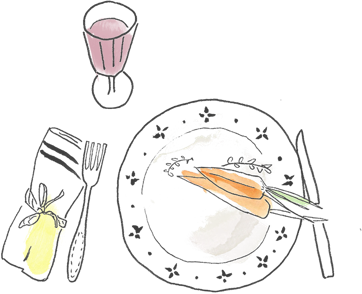


Benefits
Cooking and Virtue
Saffron is an infusion spice. It should not be used otherwise, at the risk of having little taste. Take lukewarm water and let your saffron infuse for 2 hours so that it releases all its fragrances and aromas. Then use this infusion for your cooking. Never use saffron with boiling water or in a simmering dish. In fact, heat above 70° tends to break down the aromatic compounds in your saffron. However, it is possible to infuse your saffron directly in a simmered dish: Turn off the heat, wait for the dish to become lukewarm, add the pistils. Leave to infuse, then heat to serving temperature.

Origins
A long journey
Since its cultivation in Greece, saffron has spread first around the Mediterranean then to the East (Persia, Asia) and West (Europe including the famous Quercy saffron introduced in 732). Traces of saffron cultivation were found more than 2000 years ago in Afghanistan. More recently, 80 years ago, several farmers banded together to switch from a food crop to a cash crop of saffron. Unfortunately, history markedly stopped saffron production for a country sadly called "the cemetery of empires" which had known and still knows war for a long time.
As a woman in a conservative Afghan society, Karima's path to building her business was not easy. Today we are happy to participate in the emancipation of Karima and his company.


Customers who bought this product also bought:

